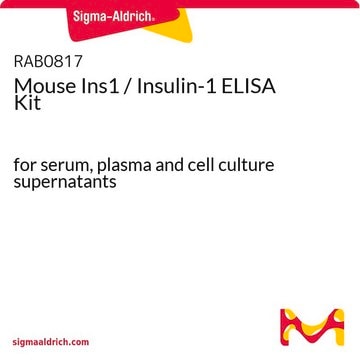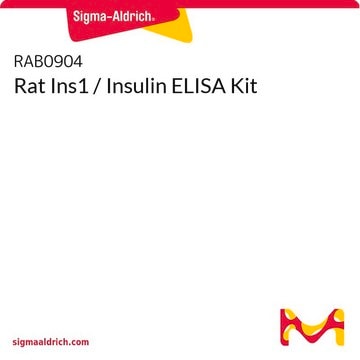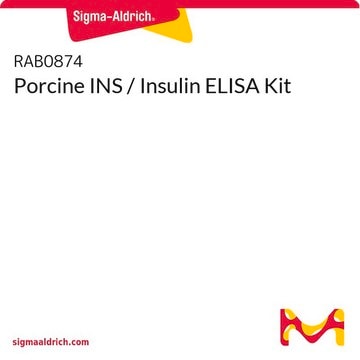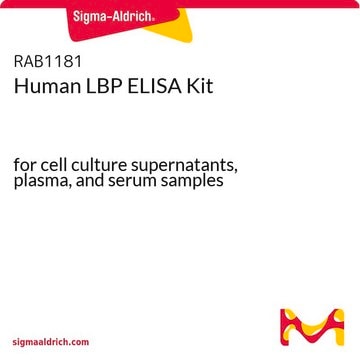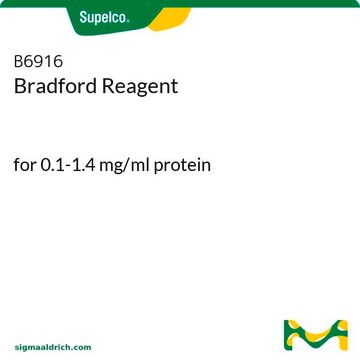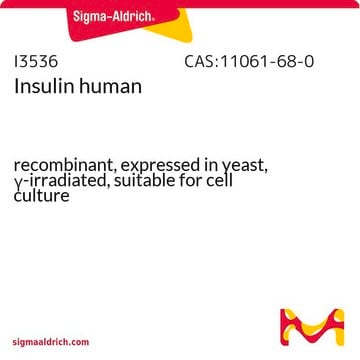The conversion for Insulin is 1 uU/mL = 35 pg/mL.
EZHI
Human Insulin ELISA Kit
measures and quantify insulin levels in 20 μL serum or plasma
Synonim(y):
Insulina
Wybierz wielkość
Wybierz wielkość
About This Item
Polecane produkty
Nazwa produktu
Human Insulin ELISA, This Human Insulin ELISA is used to measure & quantify insulin levels in Metabolism & Endocrine research.
Poziom jakości
reaktywność gatunkowa
human
opakowanie
kit of 1 × 96 wells
Parametry
20 μL sample volume (4hr assay)
assay range
accuracy: 76-103%
linearity: 96-112%
standard curve range: 2-200 μU/mL
metody
ELISA: suitable
moc wejściowa
sample type plasma (K2 EDTA)
sample type serum
sample type cell culture supernatant
numer dostępu NCBI
numer dostępu UniProt
Zastosowanie
research use
metoda wykrywania
colorimetric (450nm)
Warunki transportu
wet ice
temp. przechowywania
2-8°C
Opis ogólny
Zastosowanie
Oświadczenie o zrzeczeniu się odpowiedzialności
Hasło ostrzegawcze
Warning
Zwroty wskazujące rodzaj zagrożenia
Zwroty wskazujące środki ostrożności
Klasyfikacja zagrożeń
Met. Corr. 1 - Skin Sens. 1
Kod klasy składowania
8A - Combustible corrosive hazardous materials
Certyfikaty analizy (CoA)
Poszukaj Certyfikaty analizy (CoA), wpisując numer partii/serii produktów. Numery serii i partii można znaleźć na etykiecie produktu po słowach „seria” lub „partia”.
Masz już ten produkt?
Dokumenty związane z niedawno zakupionymi produktami zostały zamieszczone w Bibliotece dokumentów.
Klienci oglądali również te produkty
-
What is the conversion rate for Insulin from uU/mL to pg/mL?
1 answer-
Helpful?
-
Active Filters
Nasz zespół naukowców ma doświadczenie we wszystkich obszarach badań, w tym w naukach przyrodniczych, materiałoznawstwie, syntezie chemicznej, chromatografii, analityce i wielu innych dziedzinach.
Skontaktuj się z zespołem ds. pomocy technicznej
